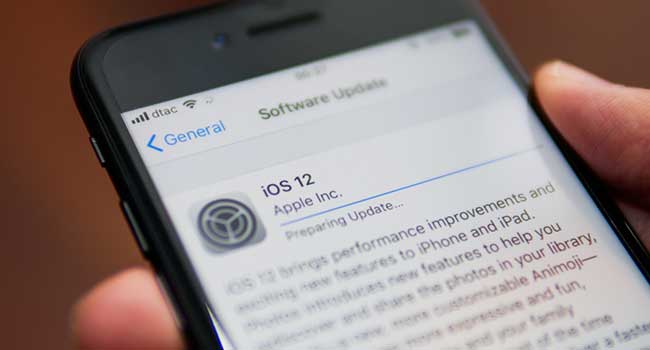
3 Ways to Use iOS 12 to Secure Your Device
iOS 12 has several new security features that will allow your device to be more secure.
- By Sydny Shepard
- Sep 20, 2018
As cybersecurity and data security become more and more important to the everyday smartphone user, tech companies have begun to roll out more secure features for their smartphones, including Apple, who just released their latest iOS version for iPhone and iPad users.
The new software has several features built in to help you increase your mobile phone security, while you might already know about a lot of them, these are the security measures you want to be sure are turned on in order to protect your personal data.
USB Restricted Mode
Apple has rolled out a new "USB Restricted Mode" feature that prevents any accessories from connecting to your device, like a USB, cables or headphones, after your iPhone or iPad has been locked for more than an hour. This feature could prevent hackers from using tools to bypass your lock screen passcode and get your data.
To access this feature, go to Settings > Touch ID & Passcode and type in your passcode. From there you will scroll to find "USB Accessories," ensure that this setting is "off." If you have an iPhone X, go to Face ID settings instead.
Create a Stronger Passcode
Apple has always been ahead of the pack when it comes to securing your device from randoms who might pick it up. Passcodes have gotten stronger in recent years, as Apple allowed users to have six-digit codes rather than four.
Now, you can set a number-only code of any length. Eight, 12, 24—it is up to you. To access this new passcode setting, you will need to navigate to your settings and select Touch ID & Passcode. From there go to Change Password and from the options, set a Custom Numeric Code.
Password Auditing
iOS 12 has had a password manager that allows you to store passwords to website, but there is now a new feature: password auditing. If the program finds that you have used a password on multiple sites, it will warn you and advise you to change those passwords. This prevents password reuse attacks (known as credential stuffing) that hackers use to break into multiple sites and services using the same username and password.
In order to opt-in to this feature, you will need to go to Settings > Passwords & Accounts > Website & App Passwords and enter your passcode. You'll see a small warning symbol next to each account that recognizes a reused password. One tap of the Change Password on Website and you are officially more secure.
About the Author
Sydny Shepard is the Executive Editor of Campus Security & Life Safety.